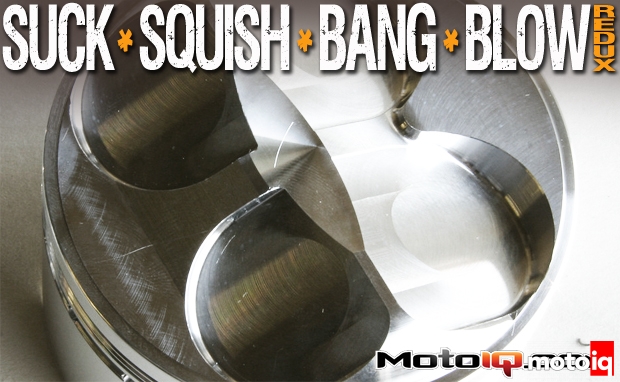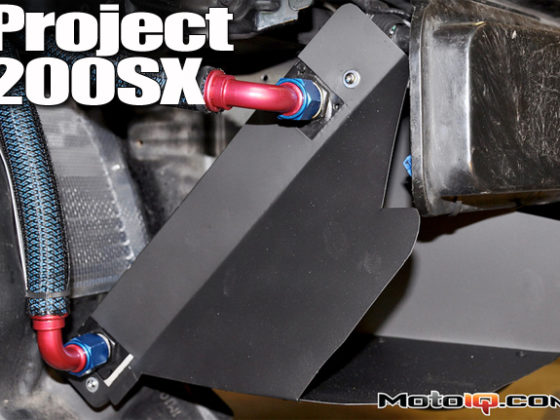
Suck, Squish, Bang, Blow part 3- Compression Ratio and Air Fuel Ratio
By Mike Kojima
In our last edition of our ongoing series on engine tuning and theory, we explained how the 4-stroke cycle works. Now we are going to break down a couple of common and very important terms that you will hear all the time when discussing engines that you must understand if you are going to successfully tune or select parts for your motor. This information can also help prevent you from getting ripped off by bogus speed shops. This can also help prevent you from being steered wrong by SPE's, FFF's and other lameo guru types that inhabit various forums and online resources.
For part one of the series click here!
For part two of this series click here!
Compression Ratio
This is a very important term that gets thrown around a lot when talking about engines. Compression ratio is the ratio of the volume of a cylinder when the piston is at the bottom of its stroke BDC, to the volume of the cylinder when the piston is at the top of its stroke TDC. The compression ratio is described as a numeric ratio.
 |
| Compression ratio is the ratio of the cylinder volumes at top dead center and bottom dead center. |
Compression ratios are affected by the volume of the cylinder head's combustion chamber, the piston top design (domed, dished, flat), the head gasket thickness and the deck height of the block (affects the position of the piston in the bore at TDC).
 |
| We will show you the effects of various piston dome volumes on compression ratios on these various JE and Arias forged pistons for a Nissan SR20DE engine. This is a forged copy of the stock Nissan piston. Its compression ratio is 9.5:1. It has a slight dish in it. |
The higher the compression ratio, the more closely packed the molecules of fuel and air are when the mixture is ignited by the sparkplug, this causes a more powerful explosion by making a more violent reaction which produces more power. Higher compression makes the expansion ratio of the exploding hot gas greater which means that more energy is impinged on the piston top, pushing it down harder, making more power. Increasing the compression ratio improves the thermal efficiency of an engine and this is the primary reason why higher compression increases power. Improving thermal efficiency improves fuel economy from getting more power from the same amount of fuel and a reduction of combustion chamber surface area to volume. This means less wasted combustion heat and more expansion being used to drive the piston down.
 |
| A flat top piston with no dish has a compression ratio of 10:1 in an SR20DE. |
Increasing compression ratio also increases an engine's volumetric efficiency. Volumetric efficiency or VE for short is the measurement of how well the engine can move the air fuel mixture into and out of the engine's cylinders. VE is the percentage of charge mixture that dynamically enters the cylinder during the intake stroke compared to the actual displacement of the cylinder. The higher the percentage, the more volumetrically efficient an engine is said to be. The more air and fuel sucked into an engine the more power it will make. Increasing the compression increases the amount of suck an engine will have on the intake stroke which will increase VE. The increase can equate to a few percent which can be significant in the overall increase in power.
 |
| This version of the piston with a high dome has a compression ratio of about 13:1 |
You might hear the term dynamic compression ratio thrown around a lot. This term is a misnomer as there is no such thing as a dynamic compression ratio except for an odd Saab and research engines where the compression ratio can be changed on the fly. The engine's dynamic cylinder pressure can be affected by many things but this is not the compression ratio which is a fixed mechanical ratio that doesn't change except for the above mentioned exceptions.
 |
| The turbo version of this piston has a deep high volume dish which reduces the compression ratio to around 8.5:1. The size and shape of the domes or dishes will vary from engine type to engine type but you can get the idea of how the piston top can influence compression ratios by these examples. |


